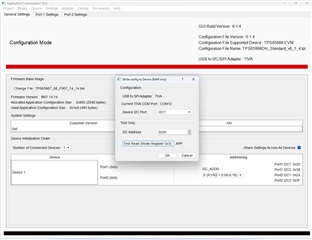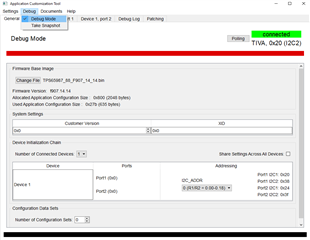Part Number: TPS65988EVM
I have communicated with engineering support several times about the issue I am having writing a project to device ram on a TPS65988EVM.
I can successfully communicate with the board, and I can see ports 20 and 24, and read the test registers successfully. However, after I load a project, I am unable to write that project to the device ram.
This the error I receive:
Exception Encountered during Import From Device:*** ERROR in FTDI call (I2C_DeviceWrite), status: 2
<type 'exceptions.Exception'>
Traceback (most recent call last):
File "dialogWindow.pyc", line 9772, in import_config
File "device_rw.pyc", line 707, in read_reg
File "hw_interface.pyc", line 417, in hw_i2c_write_no_stop
File "ftdi.pyc", line 615, in ftdi_i2c_write
Exception
This problem remains unresolved, and it is seriously impacting my project.



